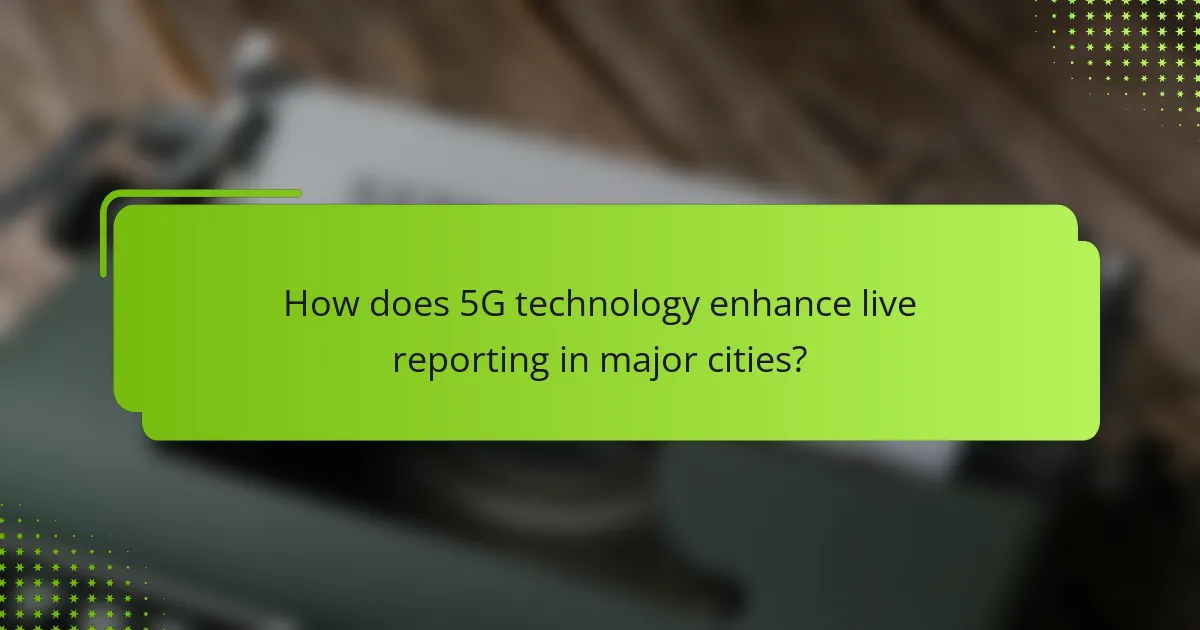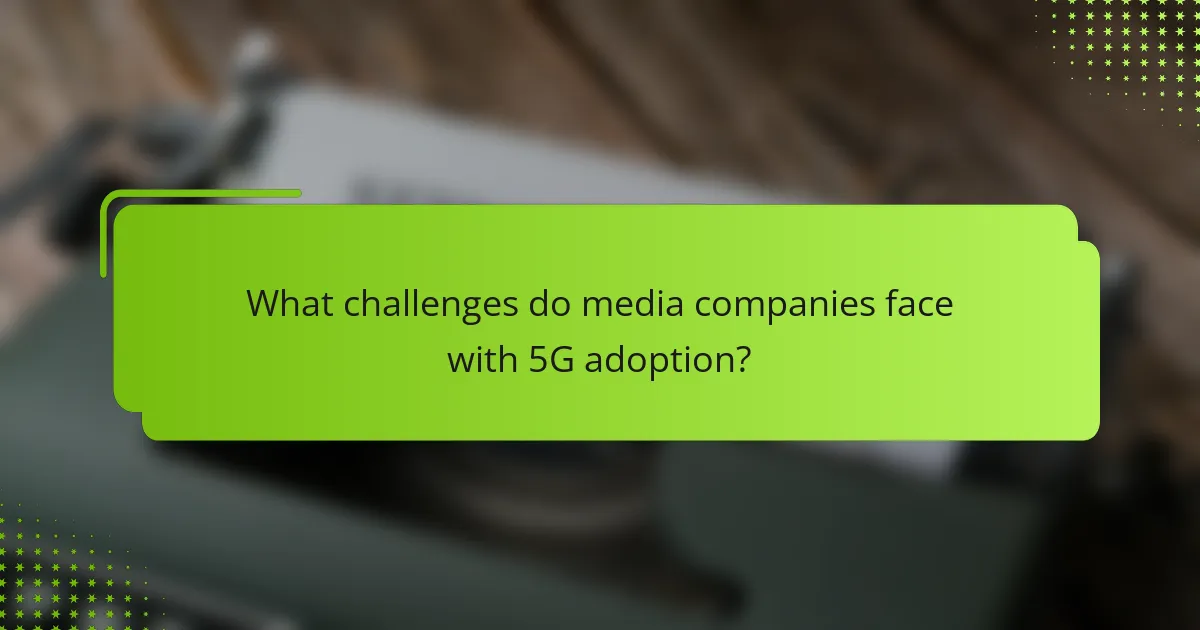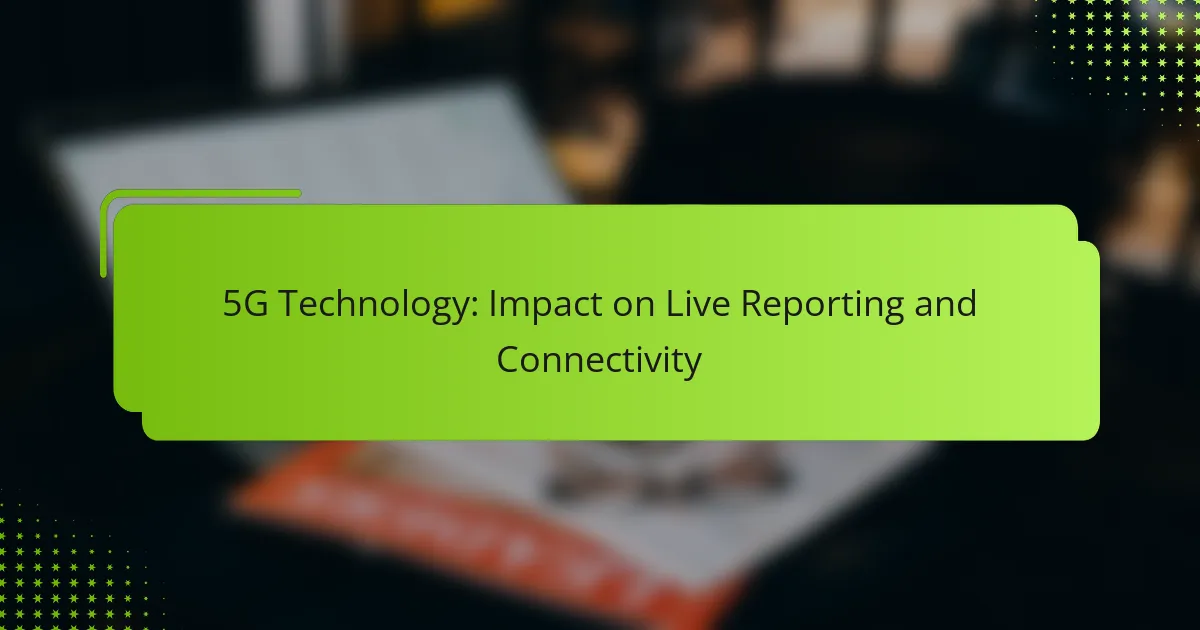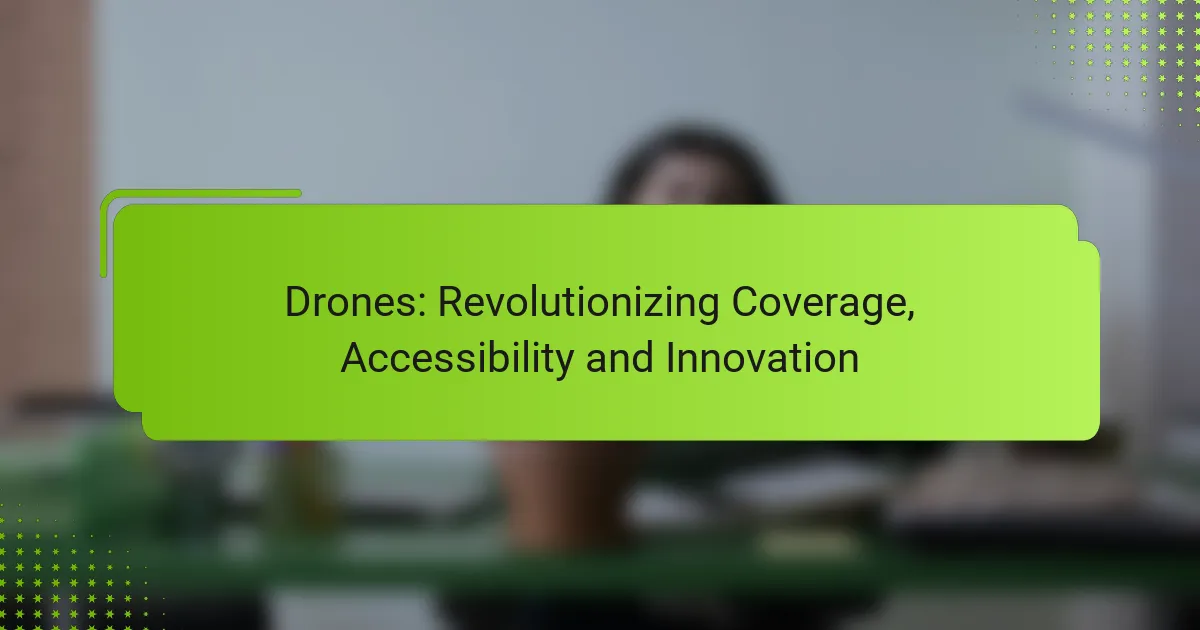5G technology is revolutionizing live reporting by delivering faster connectivity and improved video quality, enabling journalists to provide real-time updates with unprecedented efficiency. This enhanced capability not only ensures timely news delivery but also transforms the way audiences engage with information in urban environments, where reliable communication is essential.

How does 5G technology enhance live reporting in major cities?
5G technology significantly enhances live reporting in major cities by providing faster connectivity, improved video quality, and real-time updates. This advancement allows journalists to deliver news more efficiently and effectively, ensuring that audiences receive timely and high-quality information.
Faster data transmission
5G networks offer data transmission speeds that can be several times faster than 4G, often reaching up to 10 Gbps in optimal conditions. This speed enables reporters to upload large files, such as high-definition videos and images, almost instantaneously. Consequently, news outlets can broadcast live events with minimal delay, enhancing viewer engagement.
For live reporting, this means that journalists can transmit breaking news from the field without the lag that previously affected 4G connections. The ability to send and receive data quickly is crucial during fast-paced news cycles, where every second counts.
Improved video quality
With 5G, live video streams can achieve higher resolutions, including 4K and even 8K quality, providing viewers with clearer and more detailed visuals. This improvement is particularly beneficial for live events, such as sports or concerts, where visual clarity can enhance the overall experience. Reporters can now deliver more immersive content that captures the nuances of an event.
Moreover, the low latency of 5G networks reduces buffering and interruptions, allowing for seamless streaming. This reliability is essential for maintaining audience interest and ensuring that critical moments are captured and shared without delay.
Real-time updates
5G technology facilitates real-time updates, allowing journalists to provide live coverage that reflects the latest developments as they happen. This capability is vital during emergencies or breaking news situations, where information can change rapidly. Reporters can quickly share updates via social media, websites, or live broadcasts, keeping the public informed.
Additionally, the enhanced connectivity supports interactive features, such as live polls or viewer comments, which can be integrated into broadcasts. This interactivity not only engages audiences but also allows for immediate feedback, making live reporting more dynamic and responsive to viewer needs.

What are the key benefits of 5G for journalists?
5G technology offers significant advantages for journalists, primarily through enhanced connectivity, reduced latency, and improved mobile capabilities. These benefits enable faster and more reliable reporting, especially in dynamic environments where timely information is crucial.
Increased connectivity
5G provides journalists with enhanced connectivity, allowing them to maintain stable internet access even in crowded or remote locations. This is particularly beneficial during live events, where traditional networks may struggle to handle high traffic.
With 5G, journalists can upload large files, stream high-definition video, and share content in real-time without interruptions. This capability is essential for breaking news coverage, where every second counts.
Lower latency
Lower latency is a key feature of 5G, significantly reducing the delay in data transmission. For journalists, this means quicker response times when sending and receiving information, which is vital during live reporting.
With latency often reduced to single-digit milliseconds, journalists can interact with audiences and sources almost instantaneously. This immediacy enhances the overall quality of live coverage and audience engagement.
Enhanced mobile capabilities
5G enhances mobile capabilities, allowing journalists to utilize advanced tools and applications on their devices. This includes augmented reality (AR) and virtual reality (VR) applications that can provide immersive storytelling experiences.
Moreover, with the increased bandwidth of 5G, journalists can operate multiple applications simultaneously without compromising performance. This versatility enables them to gather, edit, and publish content more efficiently while on the move.

How is 5G impacting connectivity in urban areas?
5G technology significantly enhances connectivity in urban areas by providing faster data speeds, lower latency, and increased capacity. This advancement allows for more reliable and efficient communication, benefiting both individuals and businesses in densely populated environments.
Wider coverage
5G networks offer wider coverage compared to previous generations, enabling more users to connect simultaneously without degradation in service quality. Urban areas benefit from a denser network of small cells, which are essential for maintaining strong signals in crowded spaces.
This increased coverage means that users can access high-speed internet in more locations, such as parks, public transport, and busy streets, enhancing the overall user experience. As cities continue to expand, the ability of 5G to cover larger areas becomes crucial for maintaining connectivity.
Support for IoT devices
5G technology supports a vast number of Internet of Things (IoT) devices, allowing urban areas to implement smart city solutions effectively. With the capability to connect millions of devices per square kilometer, 5G facilitates real-time data exchange between sensors, cameras, and other connected devices.
This support enables applications such as smart traffic management, environmental monitoring, and enhanced public safety systems. As cities adopt more IoT solutions, the reliance on 5G networks will grow, making them integral to urban infrastructure.
Better network reliability
5G networks provide improved reliability, which is essential for critical applications in urban settings. With lower latency and higher bandwidth, users experience fewer interruptions and faster response times, making it suitable for services that require immediate data transmission.
For instance, emergency services can rely on 5G for seamless communication during crises, ensuring that first responders have access to real-time information. This reliability also extends to businesses that depend on consistent connectivity for operations, enhancing productivity and customer satisfaction.

What challenges do media companies face with 5G adoption?
Media companies encounter several challenges with 5G adoption, including high infrastructure costs, the need for specialized training, and navigating regulatory hurdles. These factors can significantly impact the speed and efficiency of integrating 5G technology into their operations.
Infrastructure costs
The transition to 5G requires substantial investment in new infrastructure, including antennas, base stations, and network upgrades. Media companies must evaluate the financial implications, as costs can range from tens of thousands to millions of dollars depending on the scale of deployment.
Additionally, ongoing maintenance and operational expenses can add to the overall financial burden. Companies should consider phased rollouts or partnerships to mitigate costs and share resources effectively.
Training requirements
Implementing 5G technology necessitates that staff receive training on new equipment and protocols. This training can vary in duration and complexity, often requiring weeks to months for full proficiency.
Media companies should develop comprehensive training programs that include hands-on experience with 5G tools and technologies. Investing in employee education can enhance productivity and reduce the risk of errors during live reporting.
Regulatory hurdles
Media companies must navigate a complex landscape of regulations related to 5G deployment, which can differ significantly by region. Compliance with local laws regarding spectrum allocation and broadcasting standards is essential to avoid legal issues.
Staying informed about regulatory changes and engaging with local authorities can help companies anticipate challenges and streamline the adoption process. Building relationships with regulators can also facilitate smoother transitions to 5G technology.

How can media organizations prepare for 5G integration?
Media organizations can prepare for 5G integration by focusing on training their staff, upgrading their equipment, and collaborating with telecom providers. These steps will enhance their ability to leverage the high-speed, low-latency capabilities of 5G technology for live reporting and connectivity.
Invest in training
Training staff is essential for effectively utilizing 5G technology. Media organizations should provide comprehensive training programs that cover the technical aspects of 5G, as well as practical applications in live reporting. This could include workshops, online courses, and hands-on sessions with new tools.
Additionally, fostering a culture of continuous learning will help staff stay updated on the latest advancements in 5G technology. Encouraging collaboration among teams can also enhance knowledge sharing and innovation in using 5G for reporting.
Upgrade equipment
To fully benefit from 5G, media organizations need to upgrade their equipment. This includes investing in 5G-compatible cameras, mobile devices, and transmission gear that can handle higher data rates and lower latency. Consideration should also be given to software that can optimize content delivery over 5G networks.
Organizations should evaluate their current technology and identify gaps that may hinder 5G integration. A phased approach to upgrading equipment can help manage costs while ensuring that essential tools are available for live reporting.
Collaborate with telecom providers
Collaboration with telecom providers is crucial for successful 5G integration. Media organizations should establish partnerships to gain insights into network capabilities and best practices for utilizing 5G. These collaborations can also lead to tailored solutions that meet specific reporting needs.
Engaging with telecom providers can facilitate access to exclusive resources, such as priority network access during major events. Organizations should seek to understand the terms of service and any potential costs associated with enhanced connectivity options.


